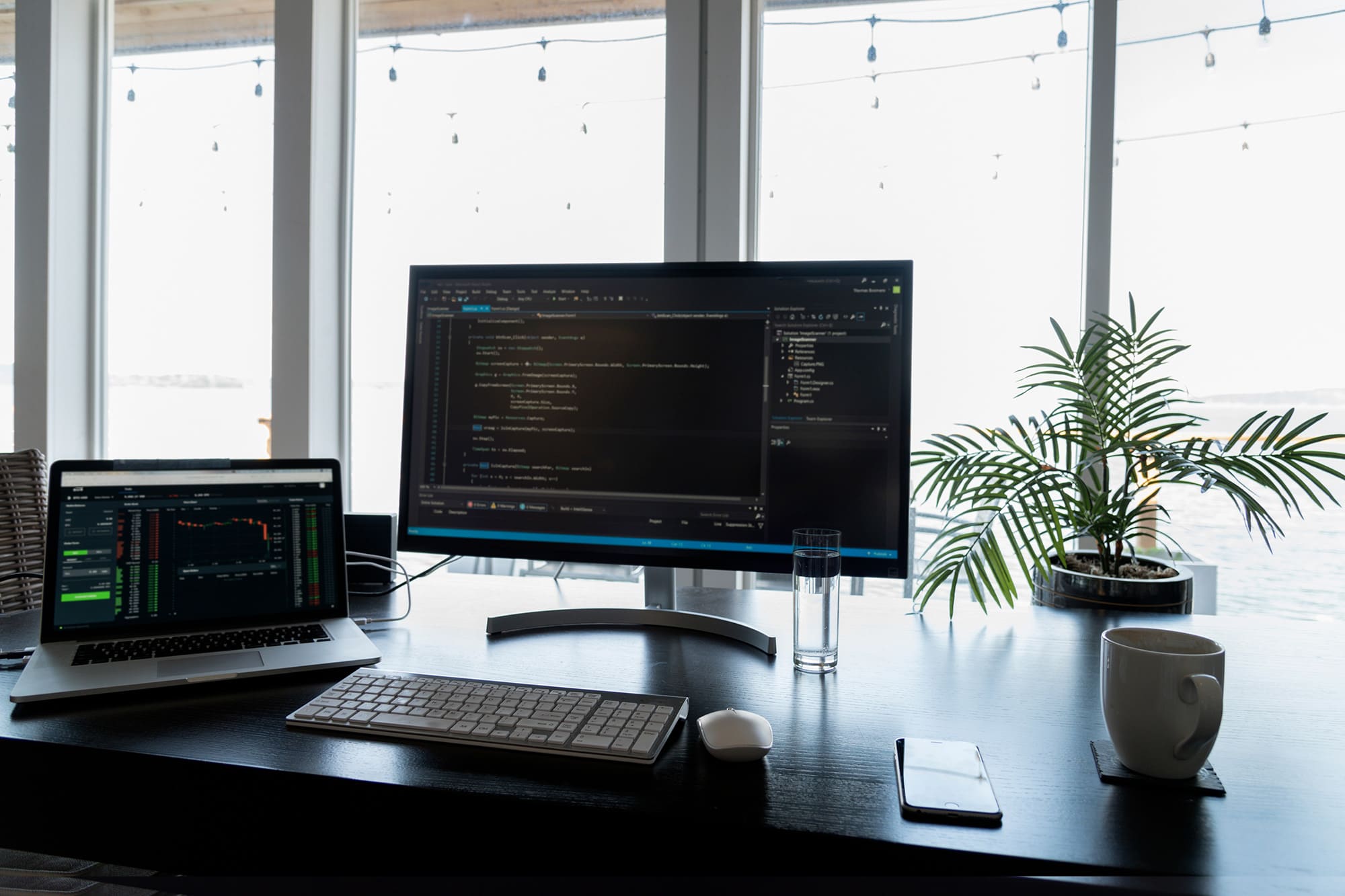In today’s fast-paced digital world, mobile app modernization is essential for staying competitive and relevant. Organizations increasingly recognize that their legacy apps can hinder operational efficiency, customer experience, and security. Yet, as companies embark on this modernization journey, they must grapple with pressing concerns about security vulnerabilities and compliance with varying regulatory standards.
How do you ensure that your newly modernized mobile app isn’t only functional but also secure and compliant with regulations like GDPR and HIPAA? A comprehensive security and compliance checklist is crucial during mobile app modernization. This checklist serves as a robust guide to ensure your app meets the stringent security standards and compliance requirements necessary for this ever-evolving digital landscape.
Importance of Mobile App Modernization Security
Understanding Security Threats in Mobile App Modernization
Security is critical when discussing mobile app modernization. As organizations move to update their mobile applications, they may unintentionally introduce new vulnerabilities. Common security threats during this process include:
- Data Breaches: Modernized apps often involve migrating sensitive data. If not handled properly, this can lead to unauthorized access and potential data breaches.
- Insecure APIs: Application Programming Interfaces (APIs) are frequently updated during modernization. An insecure API can expose apps to various threats such as manipulation and data theft.
- Outdated Third-Party Libraries: Many modern apps utilize third-party libraries. If these libraries are not updated, they can become security liabilities, risking both data and organizational integrity.
- Inadequate Authentication: Poor authentication mechanisms can compromise app security, leading to unauthorized user access or account takeovers.
Understanding these potential threats is crucial for developers and organizations. Modernization efforts must embed security principles from the ground up rather than addressing them as an afterthought.
Compliance Regulations Affecting Mobile App Development
Another critical aspect of mobile app modernization is compliance with various regulations. Different industries are governed by specific compliance standards to protect user data and privacy. Key regulations include:
- GDPR (General Data Protection Regulation): This European regulation mandates strict data privacy guidelines for handling personal information, applicable to any organization that processes data of EU citizens.
- HIPAA (Health Insurance Portability and Accountability Act): For those in the healthcare sector, HIPAA requires stringent measures to protect patient data.
- PCI DSS (Payment Card Industry Data Security Standard): For apps processing credit card information, compliance with PCI DSS is essential to safeguard against fraudulent activities.
- CCPA (California Consumer Privacy Act): Similar to GDPR but focused on California residents, CCPA mandates transparency in data handling for businesses.
To successfully modernize mobile applications, organizations must align their development processes with these regulations, ensuring ongoing compliance through regular audits and assessments.
Effective Risk Management Strategies for Mobile Apps
Identifying Risks in Mobile App Modernization
Assessing risks associated with outdated apps is a foundational step in mobile app modernization. Organizations must evaluate:
- Legacy Vulnerabilities: Identify inherent risks in legacy systems, such as outdated security protocols and potential vulnerabilities that could be exploited.
- Technological Dependencies: Assess the technology stack (e.g., frameworks, platforms) on which the legacy app is based. Deprecated technologies can pose significant risks during the modernization process.
- User Data Sensitivity: Analyze the types of data the app collects and determines what could be compromised if a breach occurred.
Conducting a comprehensive risk assessment helps prioritize which vulnerabilities to address first and tailors the modernization strategy to fit the organization’s specific needs and risks.
Implementing Risk Mitigation Techniques
After identifying risks, it’s essential to employ effective risk mitigation techniques. Here are strategies to help minimize identified risks during modernization:
- Implement Secure Development Practices: Emphasize secure coding practices to minimize vulnerabilities. Educate developers on OWASP (Open Web Application Security Project) top ten application security risks.
- Embrace Regular Testing and Auditing: Incorporate integrated testing processes for security, including static and dynamic application security testing (SAST and DAST).
- Conduct Penetration Testing: Regularly perform penetration tests to simulate a cyber attack. This helps in identifying security gaps before they can be exploited by malicious actors.
- Utilize Cloud Security Solutions: Leverage cloud solutions with built-in security features such as encryption, intrusion detection systems, and secure access controls.
By prioritizing these risk management strategies, organizations can mitigate potential issues during the mobile app modernization process.
Choosing the Right Software Development Company
Key Qualities of a Mobile App Development Company
Choosing the right software development company for mobile app modernization can significantly affect the success of the project. Here are essential attributes to look for:
- Experience in Mobile App Modernization: The company should have a proven track record of modernizing mobile applications and delivering high-quality results that align with business goals.
- Expertise in Security: A deep understanding of mobile app modernization security is critical. Ensure the company prioritizes secure coding practices and has experience in compliance with necessary regulations.
- Strong Portfolio: Review their portfolio for diverse case studies that showcase successful projects, particularly within your industry.
- Agile Development Practices: A good development company should employ agile methodologies to adapt to changing requirements and enhance responsiveness throughout the project lifecycle.
- Post-Deployment Support: Look for a partner that offers ongoing maintenance and support post-modernization to address any emerging issues quickly.
Finding a software development company that demonstrates these essential qualities can help facilitate a smooth modernization process while maintaining a strong focus on security.
Evaluating Security Credentials of a Software Development Company
Evaluating the security credentials of potential partners is paramount when choosing a software development company for mobile app modernization. Consider the following approaches:
- Certifications and Accreditations: Look for certifications such as ISO 27001, which signifies robust information security management systems, or ITIL certifications, indicating a commitment to best practices in IT service management.
- Security Policies and Procedures: Assess their internal security policies, including how they handle data breaches and employee access to sensitive information.
- Client References and Testimonials: Contact previous clients to inquire about their experiences related to security practices and the company’s responsiveness to security challenges.
- Security in Development Lifecycle: Ensure that security is integrated into their development lifecycle (DevSecOps) to make security a key component at every stage of app development.
This thorough evaluation helps ensure that your modernization partner is not just capable of delivering functionality but is also committed to maintaining robust security protocols.
Mobile App Modernization Security Best Practices
Secure Coding Practices for Developers
During mobile app modernization, developers must adhere to secure coding practices to minimize vulnerabilities. Key guidelines include:
- Input Validation: Implement input validation to ensure that only properly formatted data is processed.
- Parameterized Queries: Use parameterized queries to prevent SQL injection attacks.
- Error Handling: Avoid exposing sensitive information through error messages. Implement general error messages that don’t reveal specifics about the system.
- Secure Data Storage: Encrypt sensitive data both in transit and at rest to thwart unauthorized access.
By establishing and following these secure coding practices, developers can significantly enhance the security posture of modernized mobile applications.
Testing for Security Vulnerabilities Post-Modernization
Security testing after modernizing a mobile app is crucial for ensuring protection against new threats. Testing methodologies should include:
- Static Application Security Testing (SAST): Conduct SAST to analyze source code for vulnerabilities without executing the program.
- Dynamic Application Security Testing (DAST): Implement DAST to test the app in a running state, focusing on what an attacker can exploit in real-time.
- Vulnerability Scanning: Use automated tools to scan the application for known vulnerabilities and configurations.
- User Acceptance Testing (UAT): Involve real users in the testing process to uncover potential security concerns that might not surface in automated tests.
By committing to thorough testing immediately following modernization, organizations can better assure that their mobile applications will function securely in a live environment.
Compliance Checklist for Mobile App Modernization
Key Items for Your Mobile App Modernization Compliance Checklist
Prioritizing compliance during mobile app modernization is essential. Here’s a checklist of critical items to consider:
- Data Encryption: Ensure all sensitive data is encrypted at rest and in transit.
- Consent Management: Implement systems to manage user consent for data collection and processing in line with GDPR, CCPA, or similar regulations.
- Access Controls: Establish strong access controls based on the principle of least privilege to restrict access to sensitive data.
- Audit Trails: Maintain detailed logs of access and changes to sensitive data to support accountability and audits.
By ensuring these compliance items are on your checklist, organizations can better align their modernization efforts with existing regulatory standards.
Continuous Compliance in Mobile App Development
The importance of ongoing compliance monitoring cannot be overstated. Organizations must implement:
- Regular Audits: Schedule regular audits to review compliance with applicable regulations and internal policies, ensuring that any new releases remain compliant.
- Real-time Monitoring: Utilize software tools that offer real-time monitoring of user activity and data access to quickly identify potential compliance breaches.
- Training and Awareness: Provide ongoing compliance training for all team members involved in app maintenance and development to ensure they are aware of regulatory changes and obligations.
Continuous compliance is vital for safeguarding data integrity and trust in your mobile applications.
The Role of Mobile App Development Company in Security
Collaboration Between Companies and Developers
A successful mobile app modernization project hinges on strong collaboration between the organization and the software development company. Organizations should:
- Establish Clear Communication Channels: Keep open lines for regular updates, feedback, and adjustments to the project scope.
- Engage in Joint Security Planning: Involve both teams in discussing security requirements and compliance needs from the project outset.
- Conduct Shared Risk Assessments: Work together to identify potential risks early in the development process to mitigate them jointly.
These collaborative efforts ultimately contribute to a more secure mobile app modernization experience.
Case Studies of Successful Mobile App Modernization
Several organizations have successfully navigated the challenges of mobile app modernization while placing a strong emphasis on security and compliance:
- Example 1: Healthcare App Modernization: A healthcare provider modernized its patient management app to meet HIPAA requirements. The project involved securing sensitive patient data through encryption and implementing stringent access controls. Post-modernization audits confirmed compliance, and penetration testing revealed no vulnerabilities, ultimately improving patient trust and engagement.
- Example 2: Financial Services Transformation: A financial services firm revamped its mobile banking app, integrating advanced fraud detection mechanisms and complying with PCI DSS. The new app not only enhanced user experience but also reduced fraud-related losses by 40%.
These examples showcase the crucial balance between modernization and maintaining security compliance in a rapidly evolving tech landscape.
Conclusion
Mobile app modernization is vital for businesses looking to stay competitive in an increasingly digital environment. However, as organizations modernize their apps, they must prioritize security and compliance to protect sensitive data and uphold trust with users. Implementing a robust security and compliance checklist can help mitigate risks and ensure adherence to critical regulations.
As an AI-first company, Wildnet Edge provides expertise in mobile app modernization and offers robust solutions to help organizations navigate the complexities of security and compliance effectively. Transform your business with Wildnet Edge and unlock the full potential of your mobile applications through modern technology.
FAQs
Mobile app modernization improves functionality, enhances security, and ensures compliance with current regulations.
Implement best practices in secure coding, risk management, and regular security testing.
A software development company provides expertise, infrastructure, and support to elevate legacy mobile apps safely.
Common regulations include GDPR, HIPAA, and others that require data protection and privacy measures.
Evaluate their experience, expertise in security, and case studies of successful mobile app modernization projects.

Nitin Agarwal is a veteran in custom software development. He is fascinated by how software can turn ideas into real-world solutions. With extensive experience designing scalable and efficient systems, he focuses on creating software that delivers tangible results. Nitin enjoys exploring emerging technologies, taking on challenging projects, and mentoring teams to bring ideas to life. He believes that good software is not just about code; it’s about understanding problems and creating value for users. For him, great software combines thoughtful design, clever engineering, and a clear understanding of the problems it’s meant to solve.
 sales@wildnetedge.com
sales@wildnetedge.com +1 (212) 901 8616
+1 (212) 901 8616 +1 (437) 225-7733
+1 (437) 225-7733































